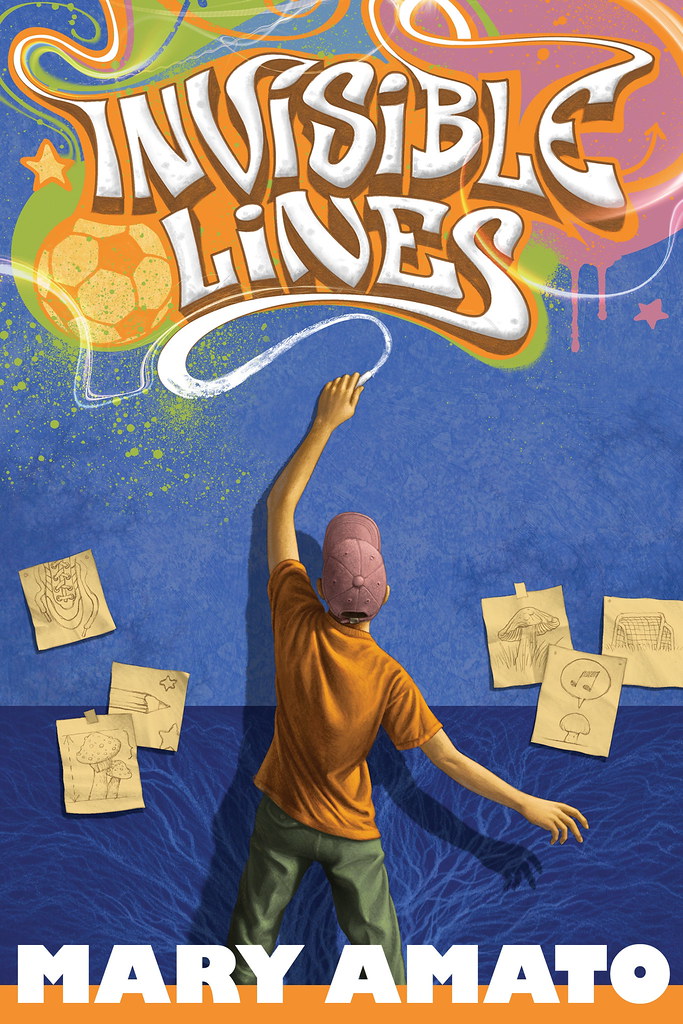I went to a terrific workshop given by Mary Amato yesterday for SCBWI's Author Book Club. Her topic was Revision, specifically the 56(!) drafts she went through for her last book, Invisible Lines.
Mary spoke about all the levels of work she puts into a novel, from writing out all actions on wall charts, index cards, etc., to putting herself in the action she is describing. For instance, she had written a paragraph about a boy lying in the grass looking at the clouds, but it just didn't feel descriptive enough to her. So she got up from her desk, went to her backyard, and lay down on the grass. Just those few minutes gave her the idea of clouds imagined as graffiti, which became three pages of text.
Mary offered these 6 Things to Succeed with Revision:
- Fluidity: don't get stuck with ideas in your original draft (to divorce yourself from your own lovely prose, write out the actions as simple sentences to see if they work)
- Define yearning: every main character should want something (She suggests interviewing yourself as the main character, asking "Who am I? What is important to me? What do I want?")
- Define the story: use the WOW technique, e.g. Wants something; Obstacle; Win [for a description of this, see Mary's essay on How to Encourage Creative Writing]
- Get into character: literally act out the scene
- Use resonating motifs: make multiple story webs, if necessary
- Look at secondary characters and subplots: make sure they amplify the original theme
For more tips and recommended resources, see Mary Amato's Writer's Blog.




No comments:
Post a Comment